Embarking on a creative journey with rayon, a fabric known for its luxurious drape and soft touch, opens up a realm of artistic possibilities.
However, painting on rayon requires a delicate touch and specific techniques to ensure vibrant and enduring results.
This guide offers insights into the meticulous process, from preparatory steps to the choice of paints and application methods.
With a careful approach and attention to detail, you’ll learn how to transform this semi-synthetic fabric into a canvas for your artistic expression, yielding personalized garments and décor pieces that reflect your unique style and creativity.
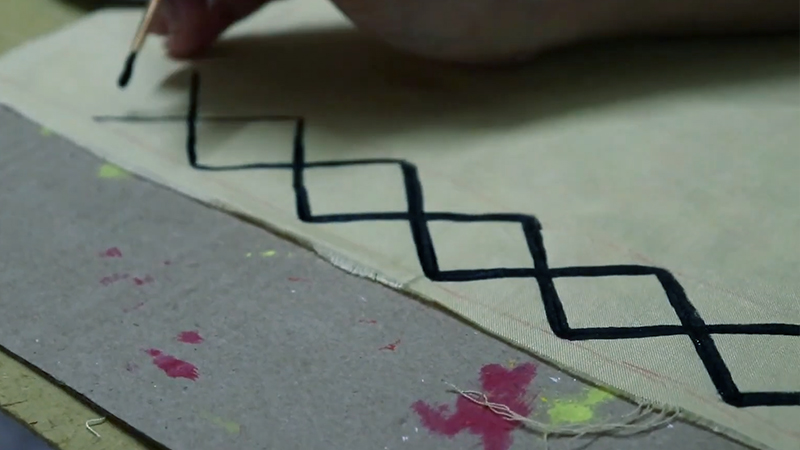
What Is Rayon Fabric?
Rayon is a versatile semi-synthetic fabric renowned for its softness, comfort, and drape. It’s crafted from cellulose fibers, often sourced from wood pulp, chemically processed to create a textile with properties akin to natural and synthetic fibers.
This unique blend is a luxurious material against the skin, resembling natural fabrics like cotton or silk.
Rayon’s breathable nature makes it ideal for warm weather, and its ability to take on dyes allows for a wide range of vibrant colors. It’s used in various applications, from apparel like dresses and blouses to home furnishings like curtains and upholstery.
Though delicate and requiring special care in laundering, rayon remains a favored choice for its blend of natural comfort and synthetic versatility.
How to Paint on Rayon?
Painting on rayon fabric can be a delightful and creative way to personalize your clothing, accessories, or home decor.
Rayon is a semi-synthetic fabric known for its softness, drape, and versatility. While it can be tricky to work with due to its delicate nature, you can achieve stunning results with suitable materials and techniques.
This guide will walk you through the steps to paint on rayon fabric.
Materials You’ll Need:
- Rayon fabric.
- Fabric paint.
- Paintbrushes.
- Palette.
- Fabric medium.
- Water.
- Masking tape.
- Paper towels or cloth.
- Cardboard or plastic sheet.
Steps to Paint on Rayon Fabric:
Prepare Your Work Area
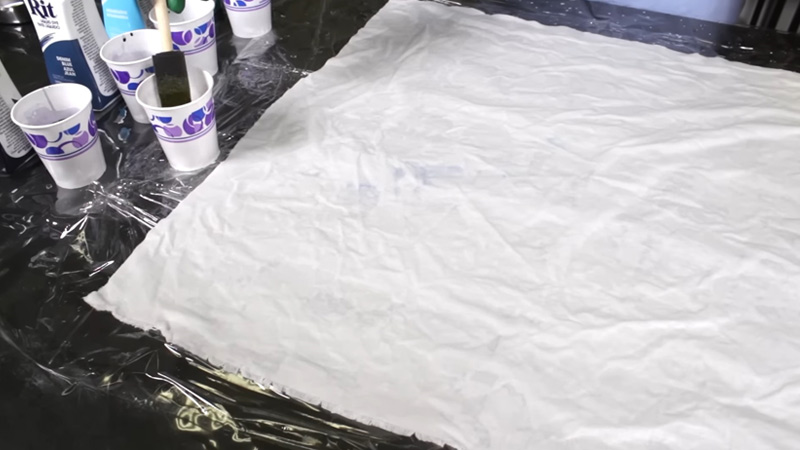
Before you begin, ensure you have a clean and clutter-free workspace. Lay the rayon fabric on a flat, stable surface like a table.
Smooth any wrinkles or folds in the fabric to create an even painting surface. If your fabric is more significant than your workspace, consider folding or rolling it to work on one section at a time.
Wash and Dry Your Fabric
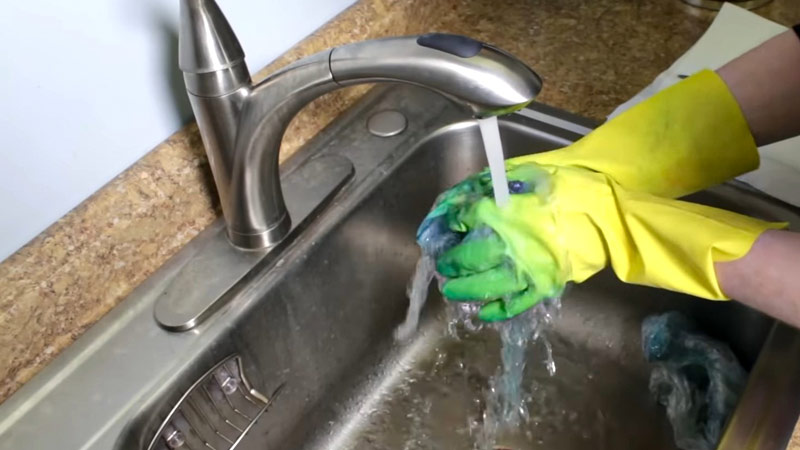
Gently hand wash the rayon fabric using a mild detergent. Rinse thoroughly to remove any soap residue.
Avoid fabric softeners, which can create a barrier that hinders paint absorption. After washing, hang or lay the fabric flat to air dry. Iron the fabric on a low setting to remove any remaining wrinkles.
Design Planning
Take your time to sketch or trace your design onto the fabric using a light pencil or fabric chalk.
Consider factors like color placement, composition, and size. This step is crucial in preventing mistakes and ensuring your final piece turns out as you envision.
Mix Your Paint
If you’re using acrylic paint, follow the instructions on the fabric medium for mixing ratios. Typically, a 1:1 ratio of paint to fabric medium works well.
Use a palette or a disposable plate to mix and dilute the paint as needed. Test the mixture on a scrap piece of fabric to ensure it’s the right consistency.
Start Painting
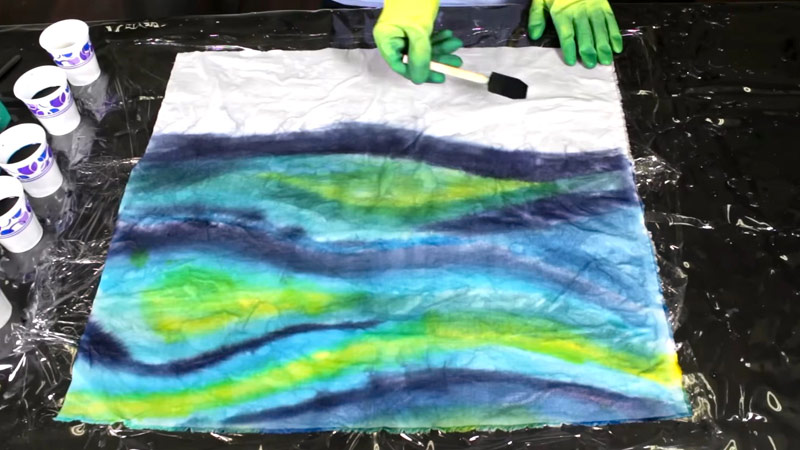
Begin with light, even strokes. Allow the first layer to dry before applying subsequent coats. Be patient and avoid overworking the fabric, leading to uneven application or potential damage to the delicate rayon fibers.
Use Masking Tape
When using masking tape, press it down firmly along the edges of your design. Make sure it’s securely adhered to prevent paint from bleeding under it. Take care when removing the tape after painting to avoid unintentional smudging or smearing.
Allow Drying Time
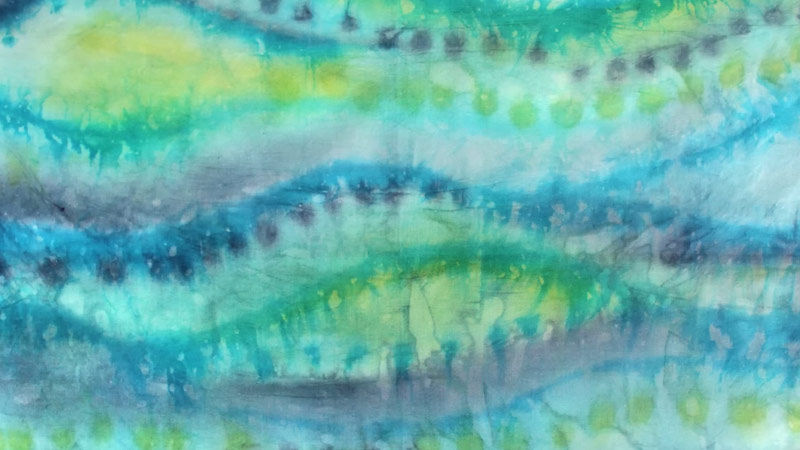
The drying time can vary based on humidity, paint thickness, and ambient temperature. To be safe, leave the fabric to air dry for at least a few hours. Consider leaving it overnight to ensure the paint has been thoroughly set for best results.
Heat Setting
This step is crucial for ensuring the durability of your painted design. Cover the painted area with a clean cloth to protect it from direct heat, then iron on a low setting (without steam) for a few minutes. This helps to heat-set the paint, bonding it to the fabric fibers.
Care Instructions
After heat setting, your painted rayon fabric should be washable, but always follow the specific care instructions provided by the paint manufacturer.
Generally, hand washing or using a gentle machine cycle with mild detergent is recommended. Avoid harsh chemicals and bleach, which can damage the paint and fabric.
Enjoy Your Creation

Once your painted rayon fabric is dry, set, and laundered according to the care instructions, it’s ready to be used for your desired project.
Whether it’s a unique garment, an accessory, or a decorative item, take pride in your artistic creation and enjoy showcasing your personalized touch.
Selecting the Ideal Paint Medium for Rayon Fabric
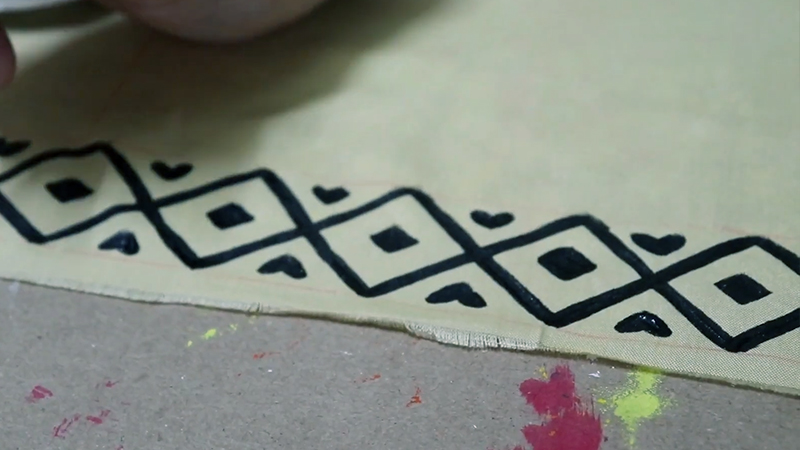
When painting on rayon, it’s best to use fabric paints specifically designed for textiles.
Among the various options, acrylic fabric paints are famous for painting on rayon. They offer a wide range of colors, excellent adhesion, and durability.
Here are some considerations when choosing paint for rayon:
1. Acrylic Fabric Paints
Acrylic fabric paints are water-based and explicitly designed for use in textiles. They offer a wide range of colors and are known for their excellent adhesion to fabrics. When applied to rayon, acrylic fabric paints provide vibrant, opaque colors.
They are easy to work with and can be diluted with water for a more transparent effect. Additionally, acrylic fabric paints dry relatively quickly, making them a popular choice for fabric painting projects.
2. Fabric Medium
Fabric medium is an additive that can be mixed with regular acrylic paints to make them suitable for use on fabric, including rayon. It improves the flexibility and adhesion of the paint, ensuring it adheres well to the fabric fibers.
Fabric medium also helps prevent cracking and fading, making it an essential tool for creating durable and long-lasting designs on rayon. Follow the manufacturer’s instructions for mixing ratios and application techniques.
3. Textile Paints
Textile paints are specifically formulated for use on fabrics. They are designed to adhere well to textiles, including delicate materials like rayon.
These paints are available in various colors and often come in bottles or tubes with fine tips, making them suitable for intricate details and designs.
Textile paints can be used for various fabric techniques, including freehand painting, stenciling, and block printing.
4. Fabric Dyes
Fabric dyes are a versatile option for coloring rayon. Unlike paints, dyes penetrate the fabric fibers, resulting in a softer and more flexible finish. They can produce a rich, translucent effect that allows the natural texture of the rayon to shine through.
When using fabric dyes, it’s essential to follow the specific instructions provided by the manufacturer, as the application and setting process may differ from that of paints.
5. Permanent Markers for Fabric
Fabric markers are a convenient tool for adding fine details, outlines, and precise lines to your rayon fabric. They come in various colors and have fine tips for controlled application.
Fabric markers are ideal for creating intricate designs, adding accents, or outlining larger painted areas. They are easy to use and provide a convenient alternative to brushes and paints for specific applications.
Tips for Painting on Rayon
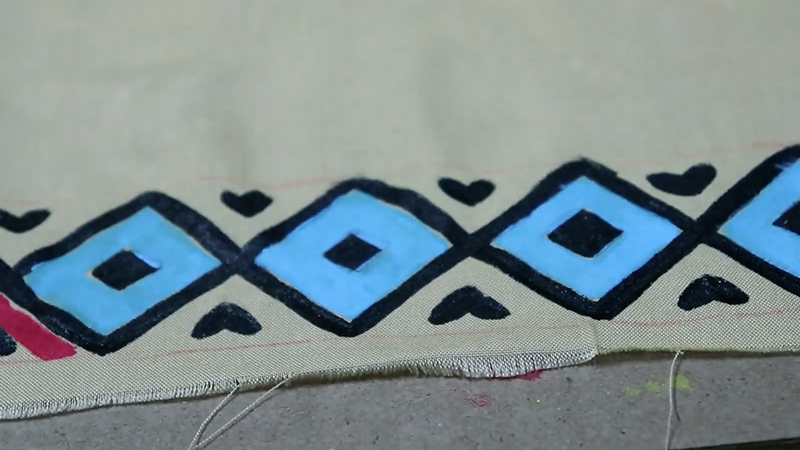
With its softness and elegant drape, Rayon provides a canvas for creative expression through fabric painting.
However, due to its delicate nature, painting on rayon requires a specific approach to achieve vibrant and lasting results.
Here are some valuable tips to guide you through the process:
Preparation is Key
Begin by ensuring your work area is clean and organized. Lay out the rayon fabric on a flat surface, free from wrinkles, providing a smooth canvas for your artwork.
Wash and Prime
Before painting, washing and thoroughly drying the fabric is crucial to remove any sizing or residue, allowing the paint to adhere more effectively. Avoid using fabric softeners, as they can hinder paint absorption.
Plan Your Design
Take time to sketch or trace your design onto the fabric using a light pencil or fabric chalk. This preliminary step helps you visualize the outcome and prevents mistakes.
Choose the Right Paint
Opt for high-quality fabric paints, preferably acrylics, known for their vibrant pigments and durability on fabrics. Consider using a fabric medium to enhance flexibility and longevity.
Apply with Care
Use soft-bristle brushes to apply paint in light, even strokes. Avoid excessive pressure, as rayon is delicate. Start with a thin layer and allow it to dry before adding subsequent coats.
Use Masking Tape for Precision
Employ masking tape to create clean edges and sharp lines in your design. This technique ensures a professional finish, especially for intricate patterns or borders.
Allow for Adequate Drying Time
Patience is key. Let the painted fabric air dry completely, giving ample time for the paint to set.
This usually takes a few hours to overnight, depending on environmental conditions.
Heat Set for Longevity
After drying, heat set the paint by placing a clean cloth over the painted area and ironing on a low setting (no steam). This step ensures the paint adheres firmly to the fabric.
Care and Maintenance
Always follow the care instructions provided by the paint manufacturer. Hand washing or using a gentle machine cycle with mild detergent is recommended. Avoid harsh chemicals.
Embrace Your Artistic Creation
Once your painted rayon fabric is complete and well cared for, it will be incorporated into your fashion or décor projects. Revel in the satisfaction of showcasing your personalized, hand-painted piece.
FAQs
Can I use regular acrylic paints on rayon fabric?
Yes, you can use regular acrylic paints on rayon, but mixing them with a fabric medium is recommended.
How should I prepare rayon fabric before painting?
Wash the fabric with a mild detergent to remove any sizing or residues. Avoid fabric softeners.
Can I use fabric dyes instead of paints on rayon?
Yes, fabric dyes can be used on rayon. They penetrate the fabric fibers, resulting in a softer finish. Follow the dye manufacturer’s instructions for the best results.
How do I prevent paint from bleeding on rayon fabric?
Use masking tape to create clean edges and sharp lines. Ensure the tape is securely adhered to before painting, and remove it carefully after the paint has dried.
Is it necessary to heat-set painted rayon fabric?
Yes, heat setting is crucial for durability. Cover the painted area with a cloth and iron on a low setting (no steam) for a few minutes to bond the paint to the fabric fibers.
Wrap Up
Painting on rayon is a captivating endeavor that combines creativity with precision. This process demands patience and a gentle touch, from the initial wash and preparation to the choice of suitable paints and application techniques.
Through careful planning and meticulous execution, rayon can be transformed into a canvas for unique, personalized creations. The final step of heat setting ensures longevity and durability, allowing your artistic endeavors to withstand the test of time.
With practice and a passion for crafting, you’ll master the art of painting on rayon, creating one-of-a-kind pieces that showcase your artistic flair and leave a lasting impression.
Embrace this artistic journey and let your creativity flourish on this luxurious fabric.
Leave a Reply